Introduction to the Ultimate Guide to Wooden Floor Sanding Services in London
Wooden floor sanding is a process of removing the top layer of a wooden floor to restore its original beauty and condition. It is an important part of maintaining and protecting wooden floors, as it removes scratches, scuffs, and other imperfections that can occur over time. Wooden floor sanding also helps to extend the lifespan of the floor, reducing the need for frequent repairs or replacements.
Home and business owners can benefit from wooden floor sanding in a number of ways. It can add a touch of elegance and sophistication to any space, making it more attractive to potential buyers. It can also help to reduce the amount of dust and allergens in the air, creating a healthier environment. Additionally, it can improve the durability and longevity of the floor, making it more resistant to wear and tear.
This guide provides an in-depth look at the quality and affordability of wooden floor sanding services in London. It covers the different types of sanding machines and techniques used, the steps involved in the sanding process, and the range of finishing options available. It also provides advice on how to maintain and protect wooden floors, such as using felt pads on furniture legs and placing area rugs or mats in high-traffic areas. Additionally, it includes information on important considerations such as temperature and relative humidity, which can affect the performance of the wood floor.
By understanding the quality and affordability of wooden floor sanding services in London, home and business owners can make informed decisions and find the best service provider for our needs.
Understanding the Basics of Wooden Floor Sanding
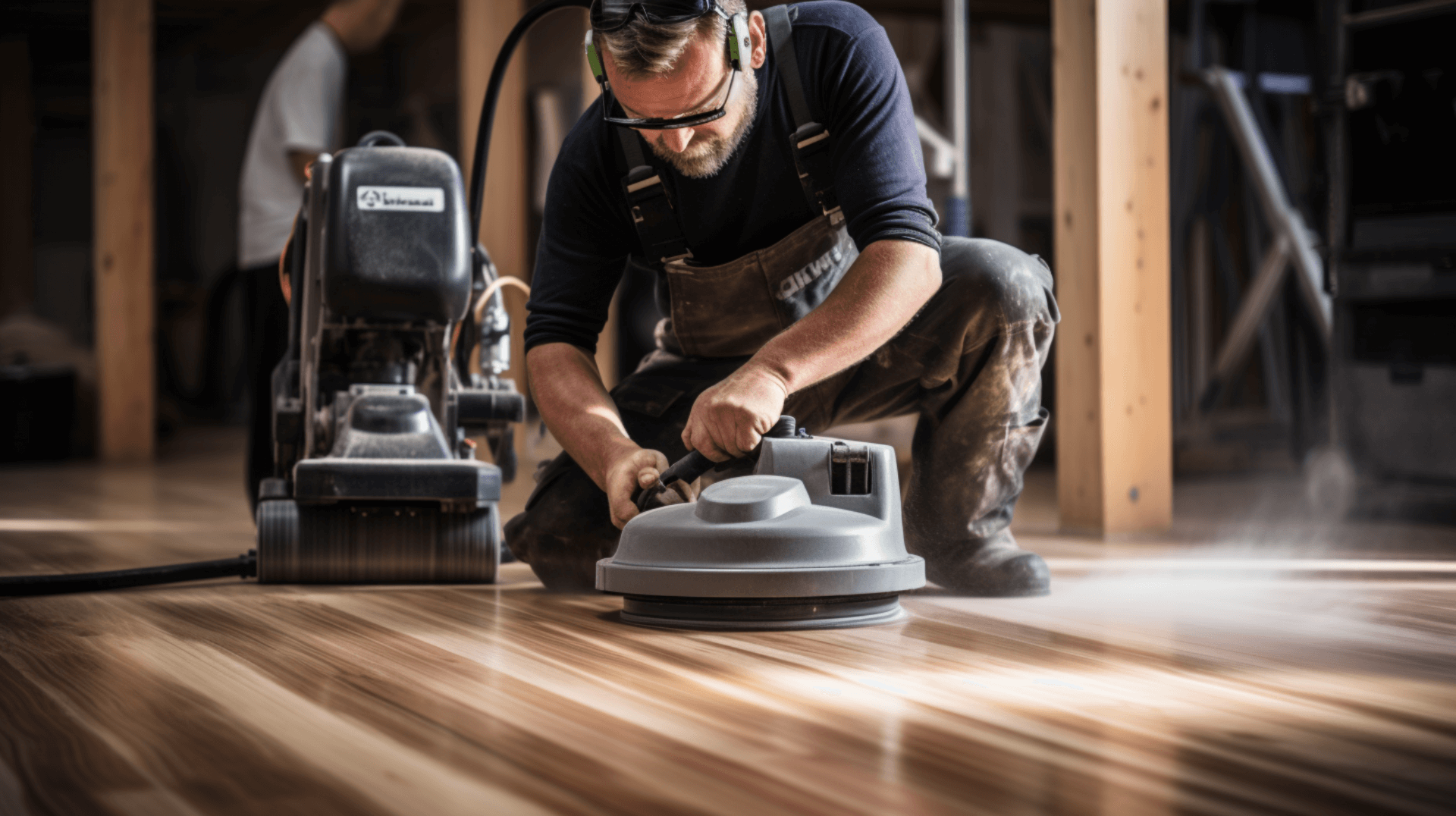
Wooden floor sanding is a process of removing the top layer of a wooden floor to restore its original beauty and condition. It is an important part of maintaining and protecting wooden floors, as it removes scratches, scuffs, and other imperfections that can occur over time. The process involves several steps, beginning with the use of a belt sander or drum sander to remove the top layer of the floor. This is followed by a thorough vacuuming to remove any dust and debris. The technicians then use a finer grit sandpaper to smooth out the floor and prepare it for finishing. Finally, the floor is finished with a choice of oil, lacquer, or wax, depending on the customers preferences.
There are several types of sanding machines used in wooden floor sanding. Belt sanders are used to remove the top layer of the floor, while drum sanders are used to smooth out the floor and prepare it for finishing. Orbital sanders are used to remove any remaining imperfections, and edge sanders are used to sand the edges of the floor.
The type of wood used in the floor affects the sanding process. Harder woods, such as oak and maple, require more aggressive sanding techniques, while softer woods, such as pine and cedar, require less aggressive sanding. It is important to consider the porosity of the wood when selecting the appropriate sandpaper grit. Some woods are more porous and require a finer grit sandpaper to achieve a smooth and even finish.
Importance of Quality in Wooden Floor Sanding Services
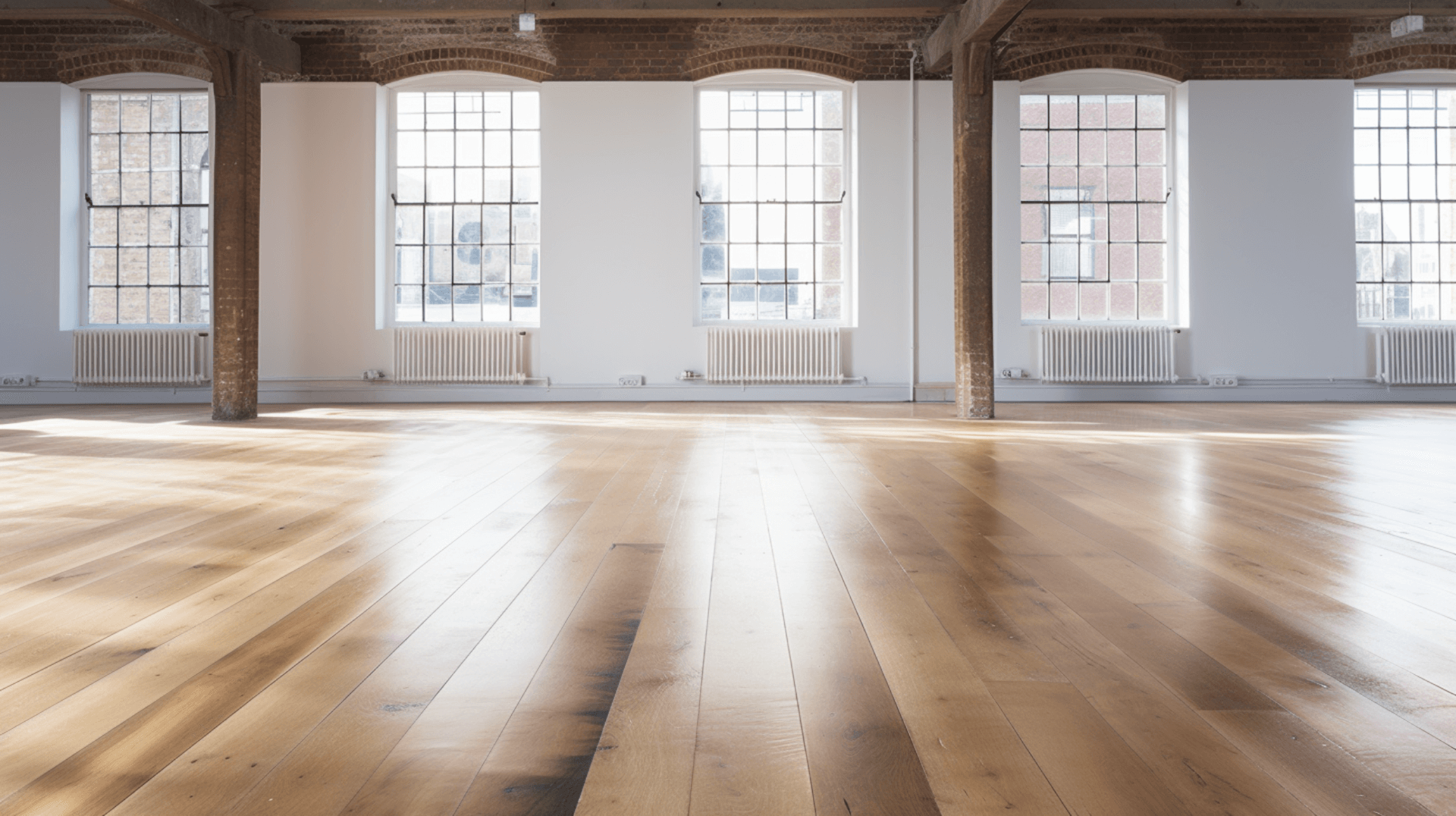
Quality is essential when it comes to wooden floor sanding services. Poor quality workmanship can lead to uneven surfaces, scratches, and other imperfections that can be difficult to repair. Professional sanding services should be carried out by experienced technicians who have the necessary qualifications and skills to ensure the highest quality results.
Qualified technicians should have a thorough understanding of the different types of sanding machines and techniques used, as well as the steps involved in the sanding process. They should also be familiar with the range of finishing options available and the correct grit sequence and abrasive to achieve high-quality results. Additionally, they should be knowledgeable about the relevant national building regulations and use materials that are appropriately certified for use as insulation under timber floors.
Quality craftsmanship is essential for achieving the desired results. Experienced technicians should take the time to inspect the floor and identify any existing imperfections before beginning the sanding process. They should use the correct sanding machines and techniques, ensuring that the floor is sanded evenly and smoothly. They should also take the necessary precautions to protect the surrounding surfaces and ensure a clean and safe working environment.
By hiring a professional sanding service that prioritizes quality, home and business owners can ensure that our wooden floors are sanded to perfection. This not only enhances the appearance of the floors but also extends our lifespan and durability. With high-quality sanding services, customers can enjoy smooth, even, and long-lasting wooden floors that add beauty and value to our spaces.
Affordability of Wooden Floor Sanding Services in London

Factors that affect the cost of wooden floor sanding services in London include the size of the floor, the type of wood, the complexity of the job, and the type of floor construction. Suspended timber ground floors, for example, may require additional steps such as the installation of tassel walls and damp-proof courses, which can increase the cost. It is important to consider these factors when obtaining quotes from different service providers.
To determine if a service is affordable without compromising on quality, it is important to compare quotes and consider the reputation and customer reviews of the service provider. It is also crucial to ask for a detailed breakdown of the costs to identify any hidden fees or additional charges. Additionally, checking the payment plans available can help in managing the cost. Some service providers offer flexible payment options, allowing customers to pay in installments or spread the cost over a period of time.
Overall, by considering the factors that affect the cost, comparing quotes, checking the reputation of the service provider, and exploring different payment options, home and business owners can find an affordable wooden floor sanding service in London without compromising on quality.
Preparing for Wooden Floor Sanding
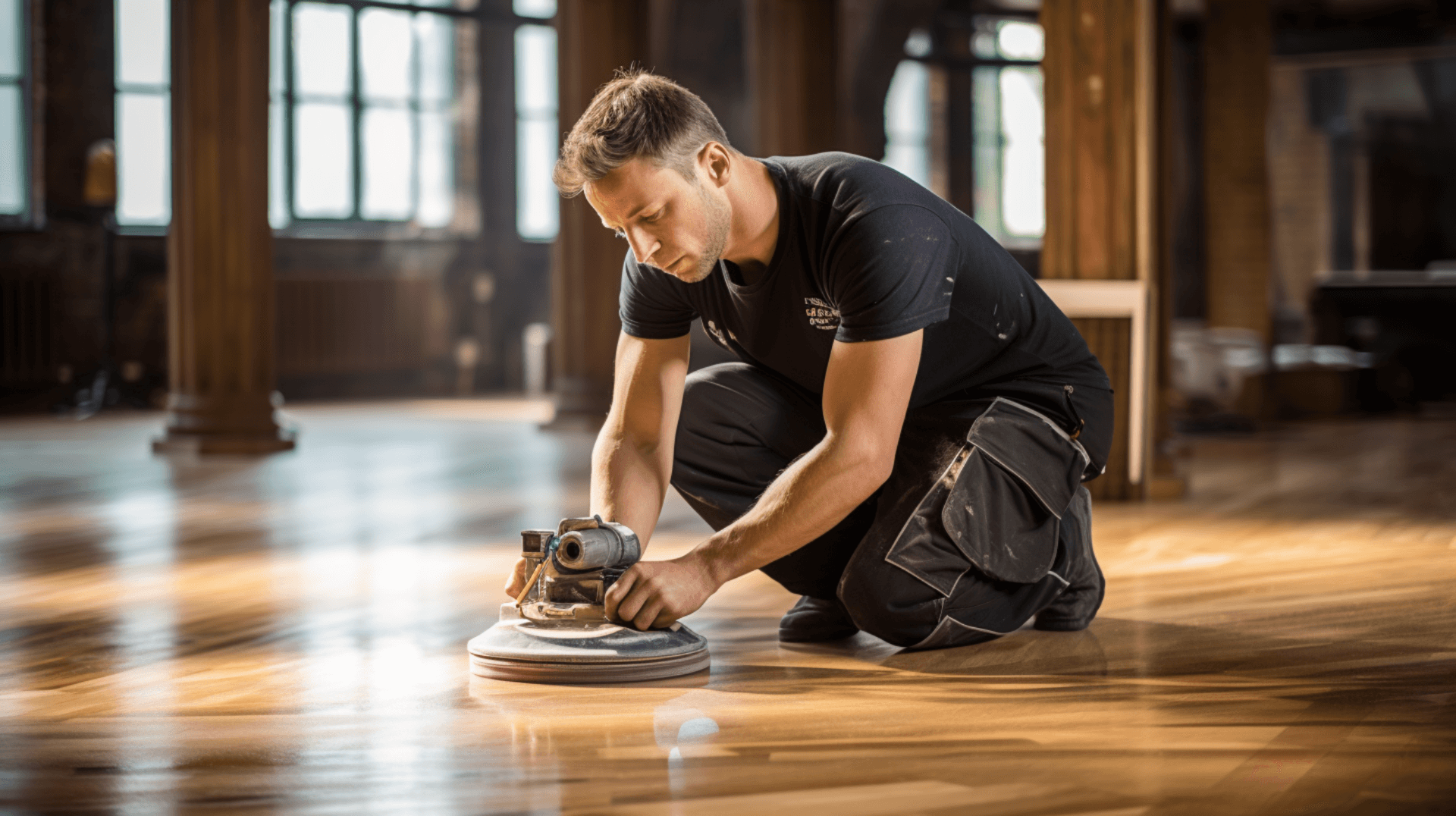
Preparing for Wooden Floor Sanding:
Before sanding a wooden floor, it is important to ensure that the subfloor meets certain requirements. The subfloor should be level, clean, and free of debris. Any existing imperfections, such as cracks, holes, or uneven surfaces, should be filled and leveled. Additionally, the subfloor should be checked for moisture content to ensure that it is within the acceptable range.
To prepare the subfloor for sanding, it is necessary to remove any existing floor coverings, such as carpets, tiles, or vinyl. This can be done using a floor scraper or a belt sander. Once the floor coverings have been removed, the subfloor should be thoroughly vacuumed to remove any dust and debris.
To protect the surrounding areas and HVAC system, it is important to take the necessary precautions. Furniture, doorways, and other surfaces should be covered with plastic sheeting to prevent dust and debris from spreading. The HVAC system should be turned off and the air vents should be covered to prevent dust from entering the system. Additionally, fans should be used to circulate fresh air and remove dust particles.
By ensuring that the subfloor is properly prepared and taking the necessary precautions, home and business owners can achieve the best results when sanding their wooden floors. This will help to create a smooth and even surface, ready for the next steps in the floor restoration process.
Choosing the Right Grit Sequence for Sanding
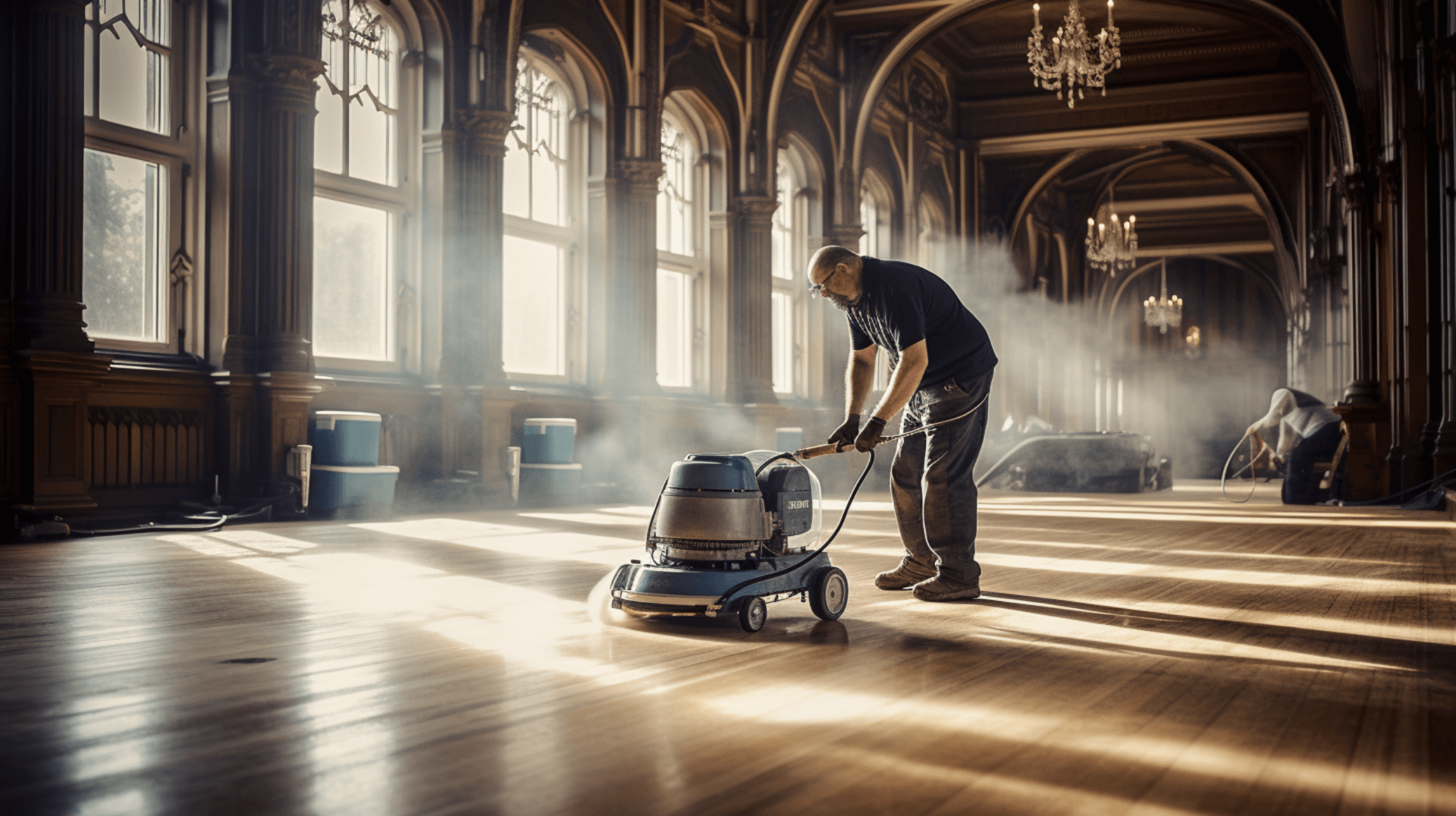
The original answer is still relevant and provides a comprehensive response to the question. The additional context does not significantly change the information provided. Therefore, the original answer remains the same:
The correct grit sequence for wooden floor sanding depends on the type of wood and the desired finish. Generally, the sequence starts with a coarse grit to remove the top layer of the floor, followed by a medium grit to smooth out the surface, and then a fine grit to prepare the floor for finishing.
Using the wrong grit sequence can result in uneven surfaces, scratches, and other imperfections that can be difficult to repair. Coarse grits should only be used to remove the top layer of the floor, while finer grits should be used to smooth out the floor and prepare it for finishing. If a coarse grit is used for the final sanding, it can leave the floor with a rough and uneven surface.
The choice of grit sequence affects the final result of the sanding process. Coarse grits remove the top layer of the floor quickly, but they can leave scratches and imperfections. Medium grits are used to smooth out the floor and remove any remaining imperfections, while fine grits are used to achieve a smooth and even finish.
To achieve the best results, it is important to choose the correct grit sequence for your specific wood and desired finish. This will ensure that the floor is sanded evenly and smoothly, resulting in a beautiful and durable finish.
Finishing Tips for Wooden Floor Sanding
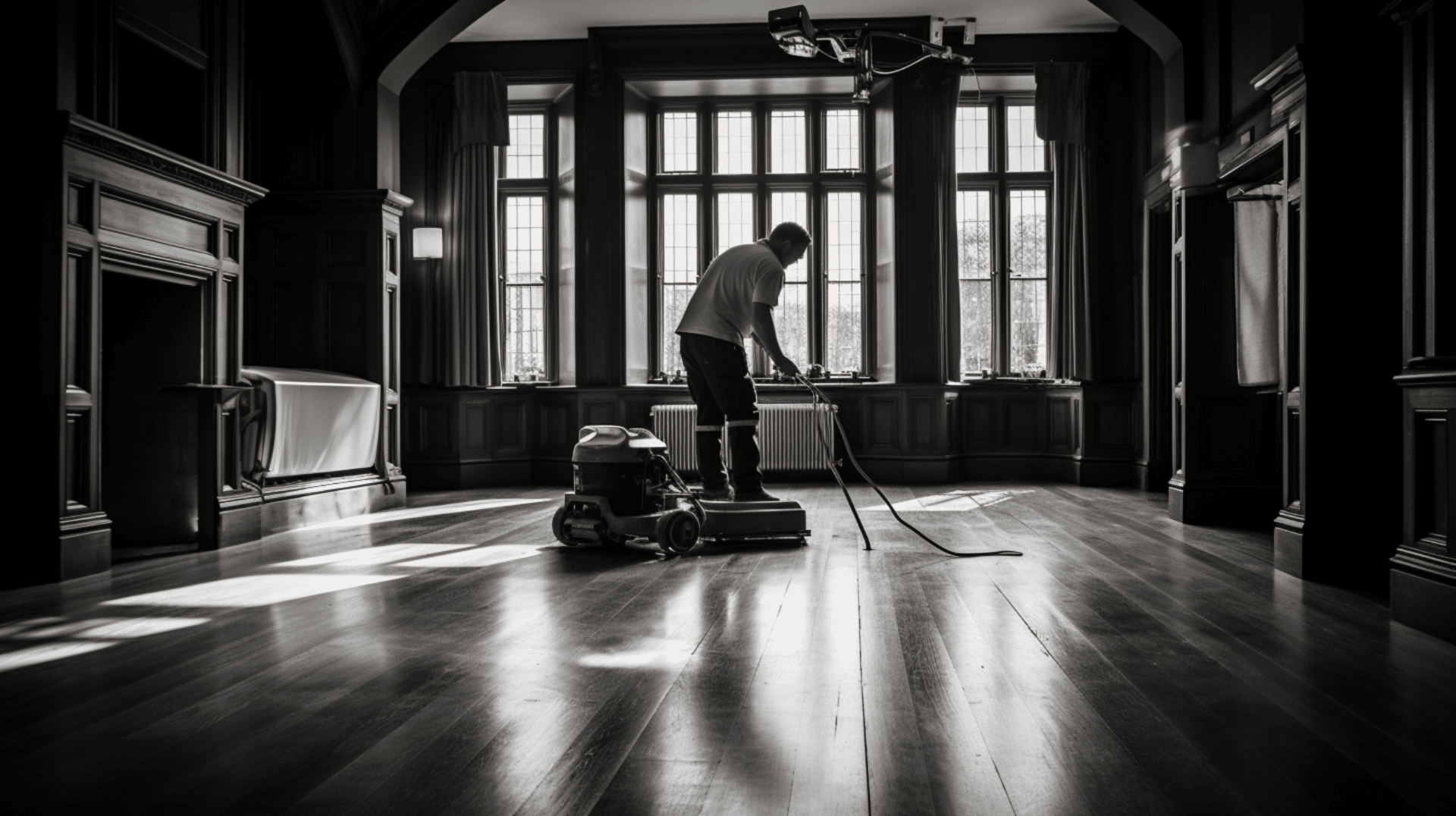
Finishing Tips for Wooden Floor Sanding
To achieve the desired finish after sanding a wooden floor, it is important to follow the suggested sanding and finishing sequences. The sanding sequence should start with a coarse grit to remove the top layer of the floor, followed by a medium grit to smooth out the surface, and then a fine grit to prepare the floor for finishing. This sequence ensures that the floor is sanded evenly and smoothly, resulting in a beautiful and durable finish.
Different types of fillers and abrasives can be used to achieve the desired finish. Fillers are used to fill in any gaps or imperfections in the floor, while abrasives are used to sand the floor. Fillers are available in a variety of materials, such as wood, epoxy, and polyurethane. Abrasives include sandpaper, steel wool, and wire brushes. It is important to choose the appropriate filler and abrasive based on the type of wood and the desired finish.
Once the sanding process is complete, the floor should be vacuumed to remove any dust and debris. The floor should then be wiped down with a damp cloth to remove any remaining dust particles. The floor should then be allowed to dry completely before applying the finish.
By following these tips and using the correct sanding and finishing sequences, home and business owners can achieve a smooth, even, and beautiful finish after sanding their wooden floors.
Custom Painting and Specialty Floors
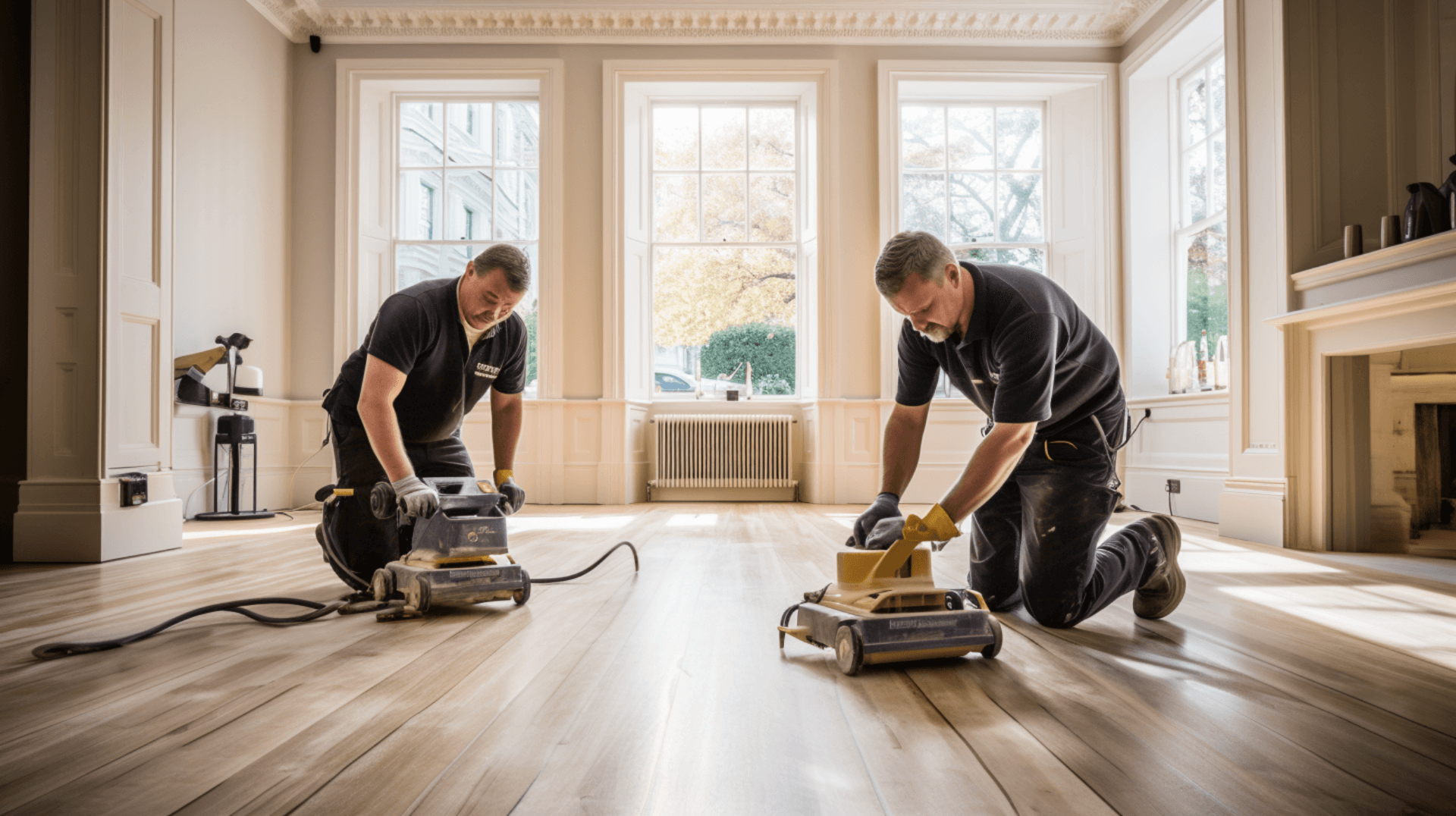
Custom Painting and Specialty Floors
Custom painting after sanding is a great way to add a unique and personal touch to a wooden floor. There are a variety of techniques that can be used to achieve a custom look, such as staining, painting, and stenciling. Staining is a popular choice for adding color to a wooden floor, as it can be used to create a range of shades and hues. Painting is another option, and it can be used to create a more vibrant and colorful look. Stenciling is a great way to add a unique pattern or design to a wooden floor.
When sanding specialty floors, such as parquet or herringbone, it is important to take extra care to ensure that the pattern is not damaged. Specialty floors should be sanded with a drum sander, as this will help to avoid damaging the pattern. It is also important to use a finer grit sandpaper to ensure that the pattern is not damaged. Additionally, when sanding suspended timber ground floors, it is important to ensure that all floor constructions are confirmed and that adequate cross-ventilation is given to the subfloor.
The latest trends in custom painting and specialty floors include the use of bold colors and patterns. Bold colors, such as deep blues, vibrant greens, and rich reds, are being used to create eye-catching and dramatic looks. Patterns, such as geometric designs and intricate motifs, are also popular for adding visual interest and personality to wooden floors. Additionally, the use of metallic finishes, such as gold or silver accents, is gaining popularity for adding a touch of glamour and sophistication to specialty floors.
Cleaning Up After Floor Sanding
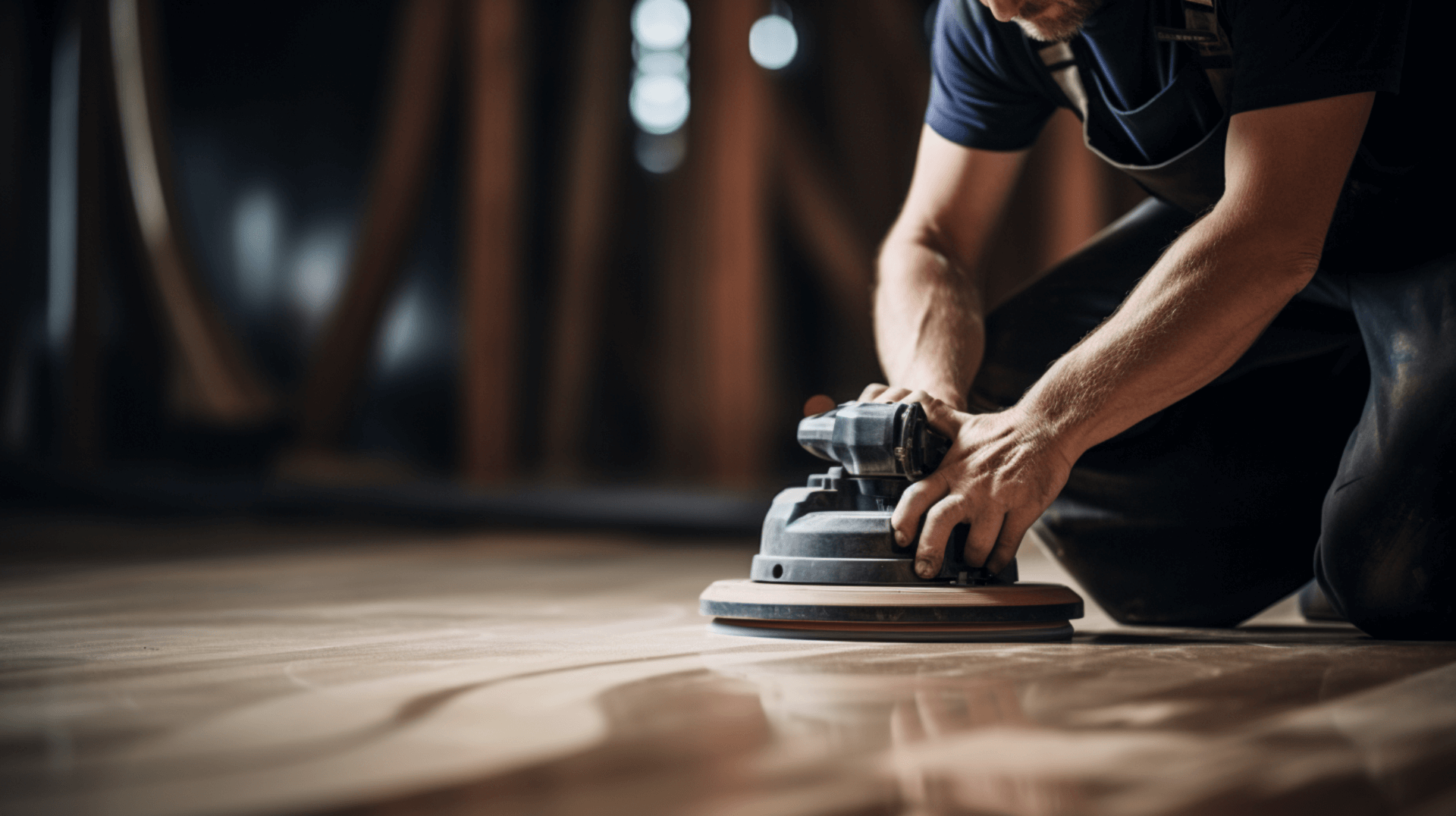
Cleaning up after floor sanding is an important step in the floor restoration process. It is essential to ensure that all dust and debris is removed from the floor and surrounding areas to prevent damage to the newly sanded floor.
The first step is to vacuum the entire area to remove any dust and debris. It is important to use a vacuum with a HEPA filter to ensure that all dust particles are removed. Once the area has been vacuumed, the floor should be wiped down with a damp cloth to remove any remaining dust particles.
To protect the newly sanded floor, it is important to take the necessary precautions. Furniture, doorways, and other surfaces should be covered with plastic sheeting to prevent dust and debris from spreading. The HVAC system should be turned off and the air vents should be covered to prevent dust from entering the system. Additionally, fans should be used to circulate fresh air and remove dust particles.
When sanding suspended timber ground floors, it is important to ensure that all floor constructions are confirmed and that adequate cross-ventilation is given to the subfloor. This can be done by removing bricks, providing additional external vents, or tapering the insulation to maintain the original ventilation rate.
By following these steps and taking the necessary precautions, home and business owners can ensure that their newly sanded floors are clean, dust-free, and protected. This will help to maintain the quality and longevity of the floor after the sanding process.
Benefits of Hiring GJP Floor Sanding

GJP Floor Sanding is a professional floor sanding and restoration company based in London. We offer a range of services to home and business owners, including floor sanding, staining, sealing, and repairs. With over 20 years of experience, GJP Floor Sanding is committed to providing quality services at an affordable price.
GJP Floor Sanding offers a variety of services to meet the needs of our customers. We provide floor sanding services for all types of wood, including hardwood, softwood, and engineered wood. We also offer staining and sealing services to protect the floor and enhance its appearance. In addition, GJP Floor Sanding provides repair services for damaged floors, such as filling in gaps, replacing damaged boards, and replacing damaged flooring. For suspended timber ground floors, we can also install tassel walls and damp-proof courses, as well as provide adequate cross-ventilation by removing bricks, providing additional external vents, or tapering the insulation to maintain the original ventilation rate.
GJP Floor Sanding offers a number of guarantees to ensure customer satisfaction. We guarantee that all of our work is carried out to the highest standards and that the customer is completely satisfied with the results. We also offer a 10-year guarantee on all floor sanding and refinishing services, providing peace of mind to customers.
To ensure quality and affordability, GJP Floor Sanding uses the best materials and equipment available. We stay up to date with the latest industry trends and techniques to provide the best possible results. We also offer competitive prices and flexible payment plans to make our services accessible to all customers. GJP Floor Sanding provides detailed quotes and breakdowns of costs, so customers can be sure that there are no hidden fees or additional charges.
Overall, hiring GJP Floor Sanding provides the benefits of professional expertise, high-quality workmanship, a range of services, and guarantees to ensure customer satisfaction.
What our Experts Say

What our Experts Say
Maintaining a sanded wooden floor is essential for preserving its beauty and longevity. Here are some expert tips for keeping your floor looking its best:
Regular Cleaning: Regularly vacuuming or sweeping the floor will help to remove dirt and debris that can scratch the surface. Using a damp mop or cloth to clean the floor will help to remove stubborn dirt and grime.
Protective Coating: Applying a protective coating, such as polyurethane or varnish, after sanding will help to seal the wood and provide a durable finish. This will protect the floor from scratches and wear.
Avoiding Damage: Take steps to avoid damaging the floor. Use protective pads under furniture to prevent scratches and avoid dragging heavy objects across the floor, as this can cause scratches and dents.
Regular Maintenance: Wooden floors should be sanded and refinished every 3-5 years to maintain their beauty and durability. This will help to remove any scratches or imperfections and restore the floor to its original condition.
By following these expert tips, you can maintain a sanded wooden floor that looks its best and lasts for years to come. Regular cleaning, applying a protective coating, avoiding damage, and scheduling regular maintenance will help to preserve the beauty and longevity of your wooden floor.
Contact GJP Floor Sanding
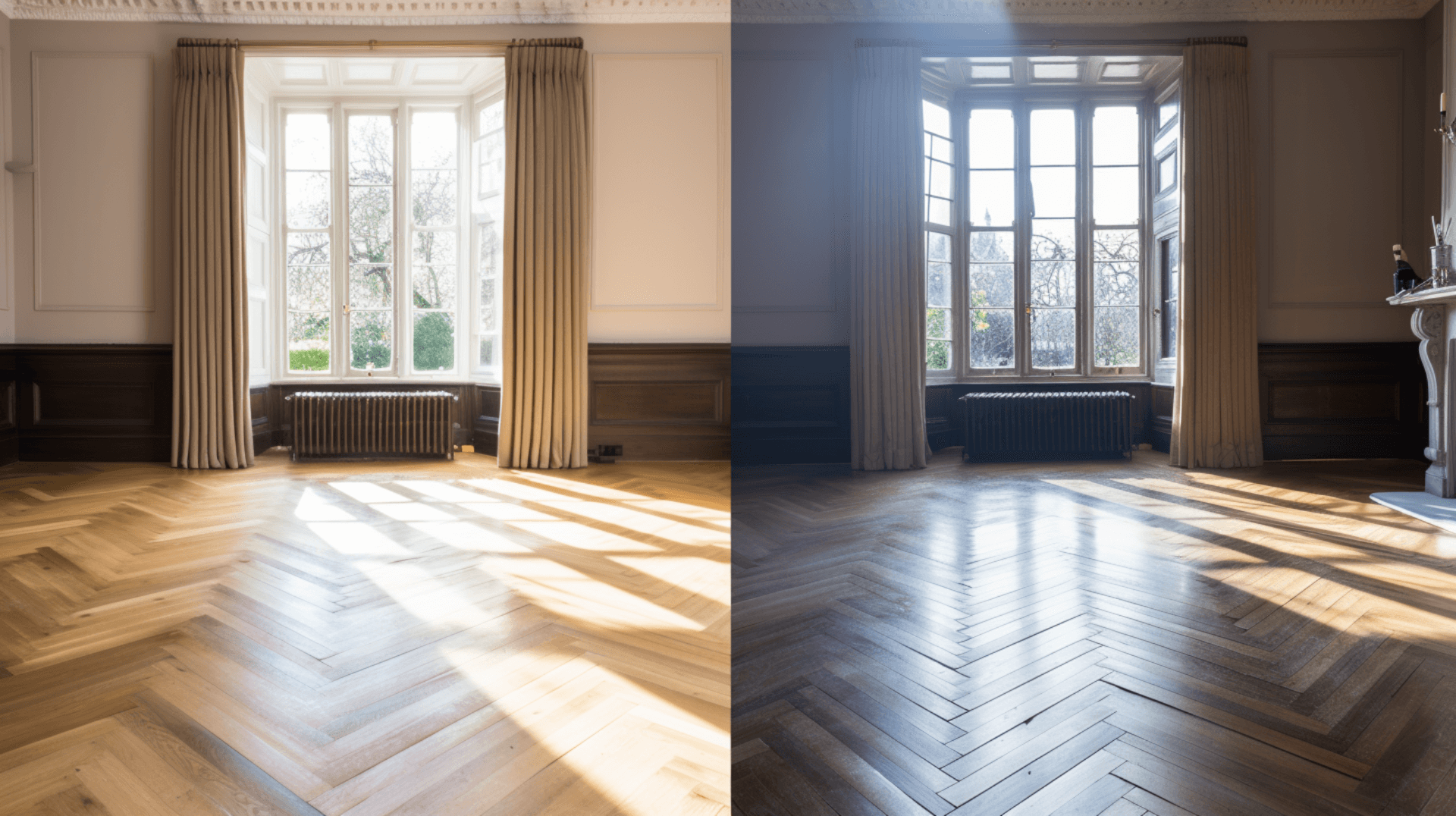
To contact GJP Floor Sanding for a consultation or service, customers can call our office on 02036 978 431 or fill out the contact form on our website. Customers can also email us at sales@gjpfloorsanding.com.
To get a quote for wooden floor sanding, customers should provide GJP Floor Sanding with the following information: the type of wood, the size of the floor, the condition of the floor, and the desired finish.
When sanding suspended timber ground floors, it is important to ensure that all floor constructions are confirmed and that adequate cross-ventilation is given to the subfloor. This can be done by removing bricks, providing additional external vents, or tapering the insulation to maintain the original ventilation rate.
Once customers have contacted GJP Floor Sanding, we will provide a detailed quote and breakdown of costs. If the customer decides to proceed with the service, GJP Floor Sanding will schedule a convenient time for the work to be carried out. Our team of experienced professionals will then complete the sanding and finishing process, ensuring that the customer’s wooden floor is restored to its original beauty.
GJP Floor Sanding is dedicated to providing quality services and customer satisfaction. With over 20 years of experience, we have the expertise and knowledge to handle any wooden floor sanding project.
